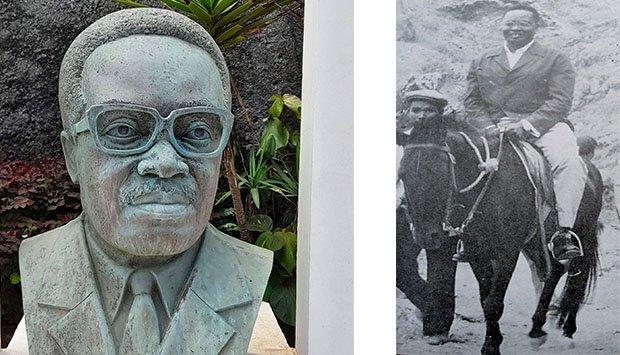Africa-Press – Angola. The Doctor Agostinho Neto arrived in Ponta do Sol in the mid-1960s, sent as a doctor for the entire island of Santo Antão, because at the time there was only one doctor for the entire island, which means that he had to travel to all the counties and parishes.
As a doctor, he was a person who quickly gained the respect and sympathy of the people because, in addition to being a good doctor, he always helped and cared about the most needy.
Just to demonstrate, for example, when he prescribed medicines and people didn’t have the resources to buy them, he simply offered, without asking for any payment, the medicines that existed in the pharmacy of the regional ward. And when there were no more medicines in the pharmacy, he, with the experience he had, would even prescribe medicinal herbs (remedies from the land) for people to treat themselves, knowing that people could not afford to buy medicines.
Still within this field, at this time, everyone should remember that there was in Santo Antão the Center for Lepers, known as the Gallery. For there he did an excellent job, treating many lepers who were later allowed to leave the center already cured.
In addition to his excellent work as a doctor, he was also a highly respected and, I might even say, feared figure politically by the colonial authorities. I say this because he was constantly watched and was often persecuted.
Just to illustrate, the colonial authorities even ordered the ban on the old Ponta do Sol football field, filling it with drums full of sand, to prevent any helicopter from landing with the intention of helping him to escape, as some were running rumors about it.
I have to say that the Ponta do Sol aerodrome, which was later built in the same space where the ban took place, was called Agostinho Neto Aerodrome, precisely because of this episode.
I remember another episode that I personally found interesting, not least because I saw it, the day the police (PIDE) wanted to make him board the Ponta do Sol pier and he simply refused to board that pier, saying that he only later embarked on the Cais do Paul, although in the same boat, which happened.
In conclusion, I would like to say that Dr. Agostinho Neto was for us, in Santo Antão, a great doctor and a great man. A man of great value and with a lot of dignity.
He was admired and respected by the older people of Santo Antão, who still remember him with nostalgia and friendship.
We, who were fortunate enough to meet him, see in him the figure of a great Angolan but also a great Cape Verdean, as he knew how to treat the people of Santo Antão with great affection, respect and dignity.
I am happy to have met part of his family, especially his wife and daughter, to be able to tell them that we, in Santo Antão, owe a lot to this great man who was Agostinho Neto and we will always have his example in mind.
88-year-old Santos, born in the parish of Nossa Senhora do Livramento, city of Ponta do Sol, lived with the doctor Agostinho Neto during his entire stay on the island of Santo Antão.
Manuel Nascimento Santos
An Angolan doctor in Ponta do Sol
Rui Ramos | in Cape Verde
There are still memories of Agostinho Neto’s visit to the Cape Verdean island of Santo Antão, 60 years ago. Agostinho Neto was a 40-year-old Angolan doctor, relentlessly pursued by Salazar’s political police. In order to isolate him from the growing international movement in his favor, the colonial regime sent him to what it considered to be a remote area, the mountains of the island of Santo Antão, more precisely in Ponta do Sol, assigning him the post of deputy for Health. But even there Agostinho Neto was uncomfortable for the colonial-fascist dictatorship and increasingly pressured internationally, the Lisbon regime put him in new cargo ships to imprison him in the political chain of Aljube. In honor of Neto, his name was given to the aerodrome of Santo Antão, deactivated since 2007, and at the Ponta do Sol – Ribeira Grande hospital, now transformed into a health post, a bust of the first Angolan President was erected.
For More News And Analysis About Angola Follow Africa-Press






